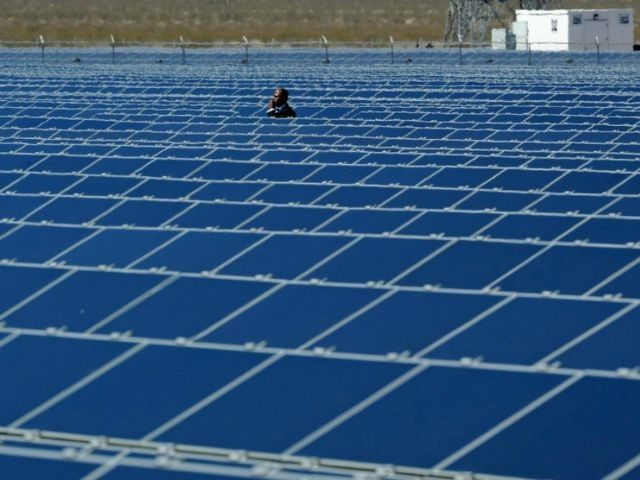ASHALIM, Israel, Feb 15 In a vast expanse of open desert in southern Israel a 787-foot tower (240 metres) is taking shape that its builders hope will help make solar energy much more cost effective.
The tower, being built by Israel-based Megalim Solar Power, whose shareholders include General Electric, will be taller than other solar towers, enabling it to generate up to 121 megawatts of power.
Due to be completed late next year at a cost of 3 billion shekels ($773 million), the facility will provide around 1 percent of Israel’s electricity under an agreement with the Israeli government, which aims for 10 percent of the country’s energy needs to be provided by renewables by 2020.
Most solar power in the world is generated by photovoltaic (PV) panels, which can be installed anywhere from a roof to a backyard. In contrast, towers that use concentrated solar power, known as CSP, require a lot of land and are only cost-efficient in large-scale projects.
For that reason they have seen limited deployment, and mainly in the United States and Europe.
Megalim’s tower in the Negev desert, which stands out for miles around, is surrounded by 50,000 computer-controlled mirrors, to project the sun’s rays. They are bigger than in previous projects and controlled over a dedicated Wifi network, rather than with expensive cables used in the past, Megalim says.
The tower is privately funded but when completed the Israeli government has guaranteed to buy the power from it at an above-market price.
That means it will be effectively subsidised, but Megalim says it is working to further reduce costs. Shareholders including power tower pioneer Brightsource Energy as well as General Electric, which will provide the turbine, want to build more such towers around the world.
“We’re making strides in efficiency, we’re making strides in compressing the time of construction,” said Megalim’s Chief Executive Eran Gartner. “We’re going down a learning curve that will help us to offer solar energy at the most competitive rates.”
To narrow the gap with PV panels, which make up 95 percent of the solar market, the U.S.-based Solar Energy Industries Association says CSP needs to reduce hardware costs and to twin its output with an energy storage element that will allow electricity production at night.
Megalim’s tower in Israel will generate heat of up to 540 degrees Celsius (1,000 Fahrenheit), producing steam to drive a turbine. It will not be able to store energy but has overcome another problem that beset solar towers – whether or not power towers were killing large numbers of birds.
When Brightsource built a three-tower facility in Ivanpah, California in 2013 with local partners, some experts said heat from its mirrors would incinerate tens of thousands of birds each year. A public outcry about the issue was in part responsible for Brightsource cancelling plans to build another tower complex in California.
An official report, based on findings by biologists and teams of dogs that combed the Ivanpah facility, documenting and categorizing every bird death, has since shown the impact to be low.
Brightsource has come up with new techniques to minimize the damage, said Joe Desmond, Brightsource’s senior vice president of government affairs and communications.
It sprays vaporized grape skin extract, a mild irritant, and emits sounds of natural predators near the tower to keep birds away, he said. It has also developed algorithms to lessen the convergence of rays from mirrors on standby, so the air does not get as hot.

COMMENTS
Please let us know if you're having issues with commenting.